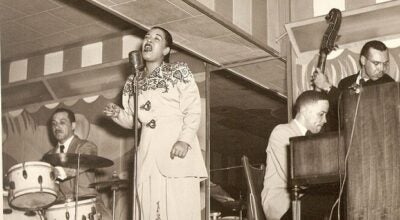How to start college with an advantage
Published 12:36 pm Wednesday, November 15, 2017
Dual enrollment programs operate as collaborative partnerships between high schools and colleges. They offer students who meet prerequisite requirements an opportunity to jump-start collegiate and professional careers by earning college credits while still in high school.
Dual enrollment differs from other accelerated learning options in significant ways. For example, in Advanced Placement (AP) programs, students receive high school credit for passing approved courses, but the conferring of college credit is conditional. It depends on a student’s choice to take a qualifying exam — 20–30 percent do not — and then on the score ultimately received. In dual enrollment programs, students take actual college courses from appropriately credentialed teachers. Credits earned through dual enrollment appear on the student’s permanent college transcript.
The National Student Clearinghouse Research Center and the Community College Research Center at Columbia University recently examined dual enrollment programs. Their study, published in September, reported that students who work on college courses concurrently with high school completion were more likely than their peers to graduate from high school, attend college and earn a college credential. The study also found that students with as little as one term’s participation also accrued benefits. Among students from Virginia, educational attainment for dually enrolled students surpassed national averages.
The ability of dual enrollment to reduce the total cost of degree or credential attainment is perhaps the best-known advantage of dual enrollment, but programs also confer other benefits. For students who are the first in their families to attend college and for those from groups that are traditionally underserved by institutions of higher education, dual enrollment courses offer a preliminary look at what college work will require. Participating helps these young adults develop the confidence they need to persist and achieve their goals. For students focused on technical and professional credentials, dual enrollment options help them acquire the knowledge and develop the skills necessary to be competitive in the workforce.
At Southside Virginia Community College, our dual enrollment program seeks to expand a tradition of higher education across our region. Approximately 70 percent of SVCC’s dual enrollment students pursue either an Associate of Arts and Sciences (AA&S) degree, which will transfer to most of Virginia’s four-year colleges and universities, or a Career Studies Certificate (CSC) in a technical or professional area. These areas include welding, automotive diagnosis and tuneup, high-performance technology, advanced manufacturing, computer-related fields and nurse aide. About 30 percent of our dual enrollment students take classes to accumulate a few college credits or to skip introductory-level classes. During the most recently completed academic year, graduating dually enrolled seniors earned 252 Associates Degrees, 35 General Education Certificates and 230 Career Studies Certificates.
For more information about dual enrollment opportunities at SVCC, contact Katherine Clatterbuck, Dual Enrollment Coordinator at (434) 736-2080 or katherine.clatterbuck@southside.edu.
Dr. Al Roberts is president of Southside Virginia Community College, an institution of higher learning that provides a wide variety of education opportunities to a diverse student population. He can be reached via email at al.roberts@southside.edu.



